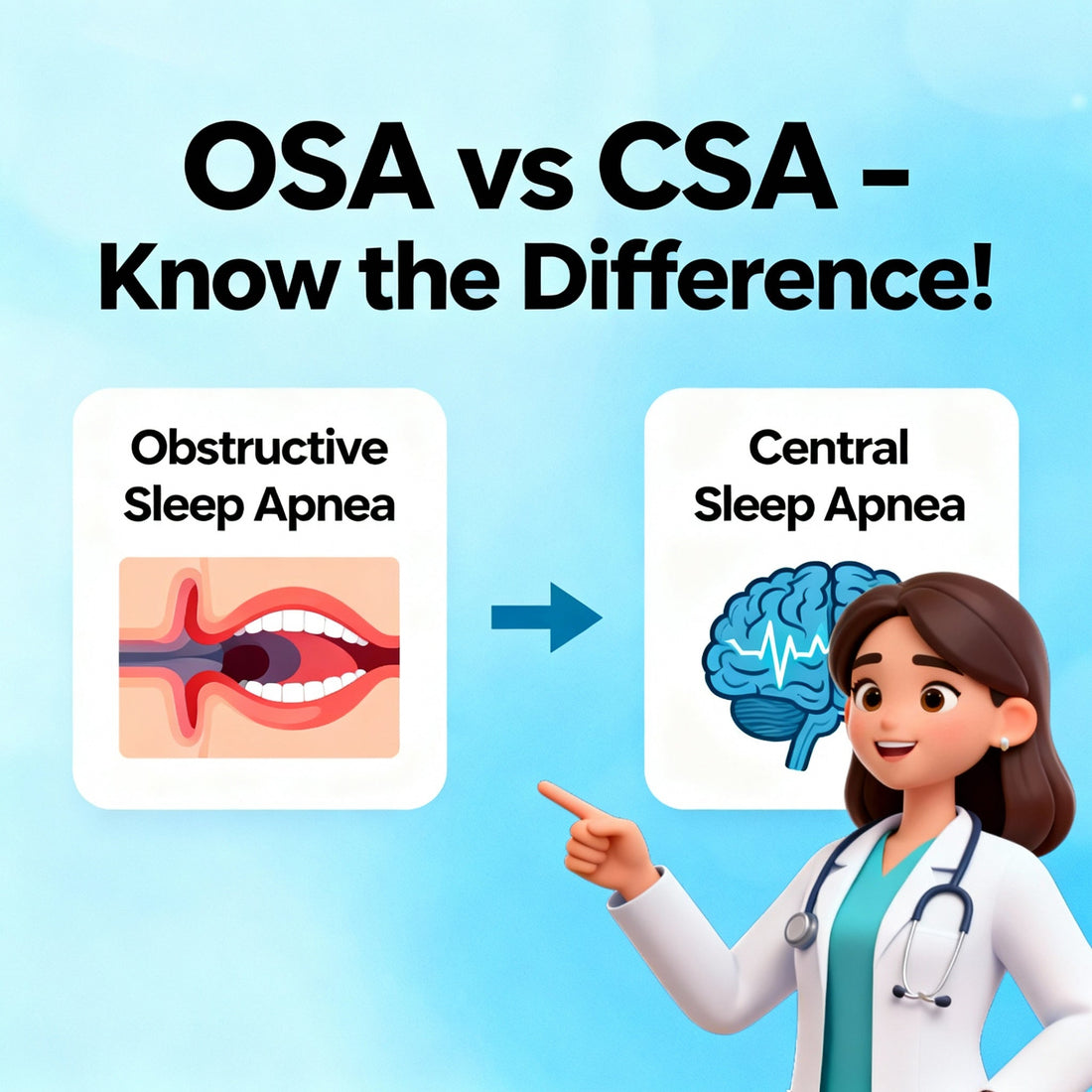
Central vs. Obstructive Sleep Apnea – What’s the Difference?
Share
Do you ever wake up gasping for air or feel tired even after a full night’s sleep? You may be experiencing sleep apnea, a serious sleep disorder that disrupts breathing during rest.
But did you know there are two main types — Central Sleep Apnea (CSA) and Obstructive Sleep Apnea (OSA)?
While both cause similar symptoms, their underlying reasons — and treatments — are very different. Let’s break it down.
😴 What Is Sleep Apnea?
Sleep apnea is a condition where your breathing repeatedly stops and starts during sleep.
These pauses can last a few seconds to even minutes, reducing oxygen levels and disturbing your sleep cycle.
Most people don’t even realize it’s happening — they just wake up feeling exhausted.
🚫 What Is Obstructive Sleep Apnea (OSA)?
Obstructive Sleep Apnea is the most common form of sleep apnea.
It occurs when your airway becomes physically blocked while you sleep — usually because the muscles in your throat relax too much.
Common Causes of OSA:
- Obesity or excess neck fat
- Sleeping on your back
- Enlarged tonsils or adenoids
- Nasal congestion
- Alcohol or sedative use before bed
Typical Symptoms:
- Loud snoring
- Gasping or choking during sleep
- Daytime tiredness or morning headaches
- Dry mouth or sore throat after waking
🧠 What Is Central Sleep Apnea (CSA)?
Central Sleep Apnea is less common but often more complex.
Here, the problem isn’t a blocked airway — it’s that your brain temporarily stops sending signals to the muscles that control breathing.
As a result, your body simply “forgets” to breathe for a few seconds.
Common Causes of CSA:
- Heart failure or stroke
- Brainstem injury or disease
- Certain medications (like opioids)
- High altitudes (temporary CSA)
Typical Symptoms:
- Interrupted breathing without snoring
- Sudden awakenings with shortness of breath
- Fatigue or poor concentration
- Difficulty staying asleep
Key Differences Between Central and Obstructive Sleep Apnea
1. Cause
- Obstructive Sleep Apnea (OSA): Caused by airway blockage.
- Central Sleep Apnea (CSA): Caused by brain signal disruption.
2. Snoring
- OSA: Snoring is very common.
- CSA: Snoring is rare or absent.
3. Breathing Effort
- OSA: Body tries to breathe but can’t.
- CSA: Body makes no effort to breathe.
4. Prevalence
- OSA: More common type of sleep apnea.
- CSA: Less common.
5. Treatment
- OSA: CPAP therapy, weight loss, or surgery.
- CSA: Treat the underlying condition or use adaptive ventilation devices.
If you suspect sleep apnea, a sleep study (polysomnography) is the best way to confirm it.
Once diagnosed, treatment depends on the type and severity:
- For OSA: Continuous Positive Airway Pressure (CPAP) therapy, lifestyle changes, or surgery may be recommended.
- For CSA: Treating the underlying heart or neurological condition, or using specialized adaptive ventilation devices can help.
🌙 Why It Matters
Untreated sleep apnea doesn’t just cause fatigue — it can lead to high blood pressure, heart disease, diabetes, and stroke.
Recognizing the difference between central and obstructive sleep apnea helps ensure you get the right treatment and better quality sleep.
🧘 Final Thoughts
Both central and obstructive sleep apnea affect your breathing — but the root causes are very different.
If you notice signs like loud snoring, gasping, or constant tiredness, don’t ignore them.
A proper diagnosis and timely care can dramatically improve your sleep and overall health.
📢 Call to Action
Have you or someone you know experienced sleep apnea symptoms?
Share your thoughts or experiences in the comments — your story might help others recognize the signs early.
